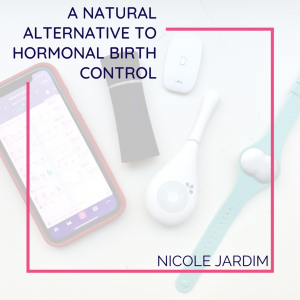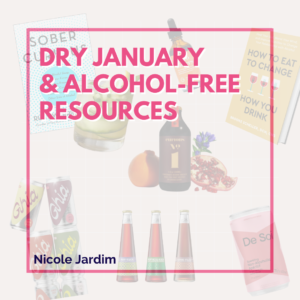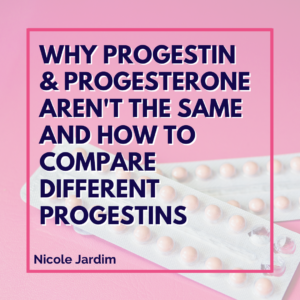Let’s talk contraception, shall we? By the end of their reproductive years, more than 80% of US women will have used oral contraceptives at least once in their life, for an average of about 5 years. EIGHTY PERCENT OF US! FIVE YEARS! That is a lot of birth control pills!
Birth Control: The Pinnacle of Reproductive Freedom?
Obviously, there is cause to celebrate the increasing availability (and improved safety) of contraception around the world. It’s no secret that the birth control pill has revolutionized the lives of like, a bazillion women in the last 50 years, not in the least by providing a sense of control over our own bodies and the freedom to make our own decisions in terms of family planning.
But, as with everything, that’s not the WHOLE story.
Unfortunately, this “freedom” hasn’t come without a cost. The health risks and side effects associated with long term hormonal birth control usage are not trivial, and I have yet to meet a single woman who has taken birth control without experiencing any side effects at all. (Read: 5 Things You Should Know About Hormonal Birth Control!) Do you really want to roll that dice?
In fact, women tell me ALL the time about how much pain and trouble their hormonal birth control is causing them—but they are so terrified of coming off that they just continue to endure the discomfort. It’s nuts! But I get it, because I’ve been there.
A little bit of background…
When I first went on the pill at 19, I was convinced I’d hit the jackpot. A magic cure for my super painful, heavy and irregular periods? Sign me up!
Turns out, what I’d really found was the perfect camouflage for my symptoms. In four short years, I became riddled with joint pain, had the worst case of chronic yeast and urinary tract infections, I’d forgotten what sex was, my hair was falling out, and my digestion was an utter disaster.
Yeah…not ideal. And not sexy.at.all.
As much as I hated to admit to myself, my “cure-all” didn’t give me the control over my body I thought it would—and I wanted out. But at the time, there were no fancy cell phones or period tracking apps available, so I had to track my cycles with a regular ol’ wall calendar. Oh, how far we’ve come!
Despite what some doctors will have you believe, HORMONAL BIRTH CONTROL IS NOT A CURE-ALL FOR YOUR PERIOD SYMPTOMS. And in most cases, it’s making your symptoms worse.
Thankfully, we now have more and better tools to track our fertility, and with all of the awesome resources out there, getting to know your own body—in all of its ebbs and flows—is easier than ever. This is what I call becoming “period literate.”
What is the Fertility Awareness Method (FAM)?
FAM is a method of birth control that does not use any drugs or devices, but utilizes a symptothermal approach to predict the fertile days of your cycle. Which basically means you’ll be paying attention to the following three things each month:
- Your cervical fluid and how it changes throughout the month.
- Your basal body temperature or your temperature upon awakening.
- Your cervical position, determined by palpating the cervix with two fingers.
Not everyone tracks ALL three changes throughout the month (cervical position can be tough to feel around for), but the more you know, the higher the level of effectiveness! Cervical position is optional and isn’t necessary to practice FAM effectively.
Period Literacy: How It Changed My Life
Okay, you might be thinking right now that it’s so much less time consuming to pop a pill every day than it is to learn this stuff. But I promise, the learning curve is WORTH IT. Using FAM has seriously changed my relationship with my body, given me an immense amount of data to work with concerning my hormone health, and it’s allowed me to prevent pregnancy effectively —without the terrifying risks or frustrating side effects of the pill. And It can do the SAME for you!
Want to know more? Here are some simple steps you can take ASAP:
- Check out this blog post on the Fertility Awareness Method to get a more in-depth introduction.
- Get your hands on the books Taking Charge of Your Fertility, Toni Weschler’s definitive guide to natural contraception, and The Fifth Vital Sign by Lisa Hendrickson.
- Also see My Top 3 Fertility Trackers for effortless tracking.
Are you ready to go pedal-to-the-metal in taking charge of your own fertility? Join my Birth Control Protocol, the ultimate solution to ditching your hormonal contraceptives and regaining actual control of your hormones.
Lastly, a quick (but extremely important) disclaimer—you’ve got to actually learn this method before using it as your sole method of birth control. The resources above are a good start to understanding FAM, but I always recommend working with a Fertility Awareness practitioner to fully learn this birth control method.




2 thoughts on “A Natural Alternative to Hormonal Birth Control”
Wendy, I had a similar experience with my daughter. Instead of being honest with me she kept telling me she wasn’t ready to have sex. I used a fertility monitor to get her and her boyfriend to have some straight talk about sex. Like you I insisted she use the monitor and then I picked out a safe date on her calendar and told them both that they would have the evening alone at our house to “go all the way.” My daughter was VERY nervous that night but thanked me afterwards. I try to give her and her boyfriend at least a couple of times every week to be alone together. She’s a junior this year and they’ve been together since about this time her freshman year, so family planning without barriers or hormones has been really successful for her.
Nicole:
Thank you for more great content on FAM! This has been so helpful for me as the parent of a teen daughter I can’t emphasize enough how important it is to help your daughter develop a healthy life plan for her sexuality and fertility while she still has the support and guidance of living with mom at home.
So many girls stumble into sex confused and uncertain and conflicted. It was really important to me that my daughter should have a more positive experience. Once she began dating her boyfriend, I didn’t wait for her to come to me about sex — I raised the topic with her first. At first she insisted she was too young to begin having sex and that she “never” wanted to have children. I insisted that she start using a fertility monitor and learning FAM anyway, and that was the pathway for me to persuade her to become sexually active and not to use condoms or the pill.
It took several months of discussions with her, but when I persuaded her she was ready to begin having p-in-v sex with her boyfriend, it was planned, it was safe, it was with my encouragement (the rest of our family went out for pizza and a movie that night, so her first time could be in her bedroom), and it was without any barrier or hormonal contraception.
It is wonderful knowing that my daughter has an active healthy and all natural sex life without fear of pregnancy. She is the happiest and healthiest 16 year old I know! Thank you for promoting this healthy choice!